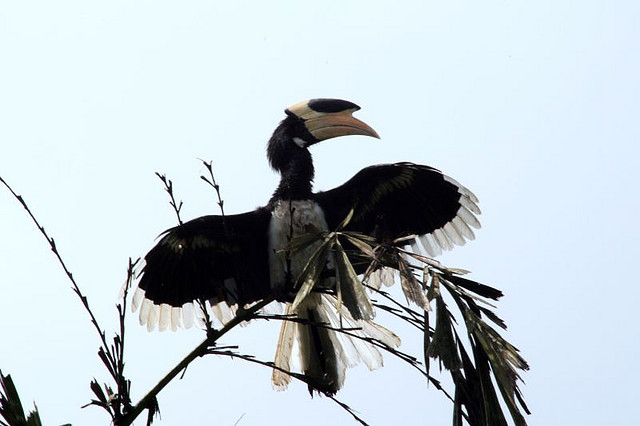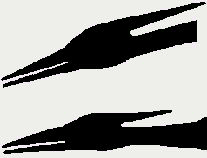The Hornbill bird has been suggested as what might cause some eyewitnesses to report a living pterosaur. But the big problem is this: What eyewitness report? The skepticism is vague. If there is any sighting that may be relevant, a skeptic needs to mention that sighting.

The above photo shows an obvious bird, with clear feathers. Although some views of flying Hornbills make the feathers less obvious, this misidentification possibility does not apply to important sightings that have been documented in the southwest Pacific, including the following: Hodgkinson (near Finschhafen, 1944), Hennessy (Bougainville Island, 1971), and Koro (Lake Pung, Umboi Island, 1994). Those three sightings were in Papua New Guinea, and not one of them could have been from a misidentification of any Hornbill bird.
Head Crest
The horn coming out of the back of the head, regarding two important reports, differs greatly from what is observed on the heads of Hornbills. Consider the following two sketches based on the choices made by two eyewitnesses: Duane Hodgkinson and Brian Hennessy:

Neither Hodgkinson’s “pterodactyl” (bottom) nor Hennessy’s “prehistoric” flying creature (top) have a head crest or “horn” with any resemblance to the structure found on Hornbill birds. In addition, Hodgkinson and Gideon Koro estimated sizes far too great to have been from any misidentification of any Hornbill bird. Hodgkinson estimated a wingspan in the neighborhood of 29 feet; Koro estimated a wing size (probably one wing) at 23 feet.
But the sightings [of apparent living pterosaurs] by Brian Hennessy, Duane Hodgkinson, and Gideon Koro were under ideal conditions [in daylight] for observing form and features. Not one of these three [huge or giant] flying creatures could have been a misidentified bird.
What modern bat or bird is known to have a long featherless tail? Probably not even one . . .


